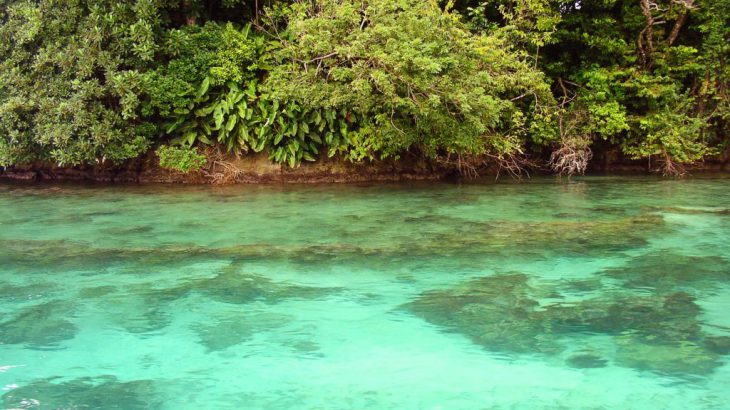The continued destruction of mangrove swamps in poor countries to provide shrimp for people living in rich countries is simply the market operating in a vacuum untroubled by ethics. — Charles Clover ( In The End of the Line: How Overfishing Is Changing the World and What We Eat (2008)
Present in the tropical and subtropical lands, mangrove forests provide an incredible source of ecosystem services due to the presence of both saltwater and freshwater. So much so that if mangroves are lost, there will be no food for the neighbouring communities. In fact, as per the Luther and Greenberg report, nearly 27 of the terrestrial vertebrates that are dependent on mangroves have been assessed by the IUCN (International Union for the Conservation of Nature), and 13 of those are classified as threatened on the IUCN Red List.
Undoubtedly mangroves are rare, spectacular and prolific ecosystems on the boundary between land and sea which supports rich biodiversity and provide a valuable nursery habitat for fish and crustaceans. However, due to the large scale urbanisation around coastal areas, mangroves are facing constant pressure from human beings to suffice their never-ending greed. Between the early 1980s and 2001, between 19 and 35 per cent of the world’s mangrove forest area was lost. At this rate of loss–about 2 per cent each year–mangroves could be extinct in 100 years.
Grow-Trees urges everyone to feel it as the utmost need of the hour to save this unique ecosystem due to its innumerable benefits to all living species – humans and flora and fauna. These benefits have been mentioned below –
FISHERIES – Mangroves not only enhance the overall aquatic ecosystem but also provide an essential commercial and recreational industry for fishing. Mangroves provide nesting and breeding habitat for fish and shellfish, migratory birds, and sea turtles. Scientists at Scripps Institution of Oceanography at the University of California, San Diego, found that mangroves demonstrably boost fishery yields by an average of about $37,500 per year per hectare. An estimated 80% of the global fish catch relies on mangrove forests either directly or indirectly. These fisheries provide food security to thousands of coastal communities. In Selangor, Malaysia 119 species were recorded as associated with mangrove ecosystems while 83 species were recorded in Kenya, 133 from Queensland Australia, 59 species in Puerto Rico and 128 from the Philippines.
WATER – Mangroves help in rejuvenating water quality with the help of their deep-seated roots which filter sediments, chemicals, metals and other pollutants from upstream and cleans the downstream water, thus preventing upstream and downstream water conflicts. Additionally, mangroves also provide a clean environment for the survival of sensitive species like coral reefs and seagrass.
NATURAL COASTAL DEFENCE – The presence of their deep-seated roots act as natural barriers against storms, cyclones, floods and other natural calamities. Mangroves provide local communities with a nurturing and safe environment, thus decreasing their disaster vulnerability. It has been found that places, where mangroves have been cut down for shrimp farms, are far more vulnerable to destructive cyclones and tidal waves as opposed to environments fostering the growth of mangroves.
CARBON STORAGE – Mangroves are essential for fighting climate change due to their carbon sequestration properties. Highly endangered coastal habitats are incredibly effective in sequestering carbon and locking it away in the soil, according to a new paper in a report by the IUCN. This paper mentions that coastal habitats—such as mangroves, seagrasses, and salt marshes—sequester as much as 50 times the amount of carbon in their soil per hectare as tropical forest. “The key difference between these coastal habitats and forests is that mangroves, seagrasses and the plants in salt marshes are extremely efficient at burying carbon in the sediment below them where it can stay for centuries or even millennia.” Recent scientific research also proves that forests and other “natural solutions” are crucial in alleviating the effects of global warming because of their carbon sequestering attribute. In fact, natural climate solutions can help us achieve 37 per cent of our climate target, even though they currently receive only 2.5 per cent of public climate financing.
SUSTAINABLE LIVING – The benefits of mangroves are multi-fold and are interlinked. The sustenance of healthy mangrove forest will also foster the subsequent higher breeding and survival of native animals and plants and encourage ecotourism in that region. Mangroves have an untapped potential for tourism for the coral reefs provide an unbelievably magnificent landscape. Other recreational activities like sports fishing and shrimp aquaculture provide communities with alternative sources of income if done in a controlled and sustainable manner.
THREATENED AND ENDANGERED SPECIES – Substantial numbers of terrestrial vertebrates are restricted to mangrove forests. Not only mangroves provide a hefty amount of fishery catch, but they support the extinct species. The first-ever assessment of mangrove species by the IUCN Red List found 11 out of 70 mangrove species threatened with extinction, including two which were listed as Critically Endangered.
Spread across 20,000 square km across the land of India and Bangladesh, the Sundarbans, the largest mangroves in the world, is a region with an abundance of beauty and yet, constant existential fear. With the rising sea level as an effect of climate change, many parts of its islands have been swallowed by the waves. The Sundarbans are slowly vanishing and the only way to save them is to protect the mangrove forests that hold on to the swampy soil of the region by planting new native species of trees.
You can also contribute towards saving the mangroves of India – http://bit.ly/2JMyuo1

thank you for giving me wonderful information